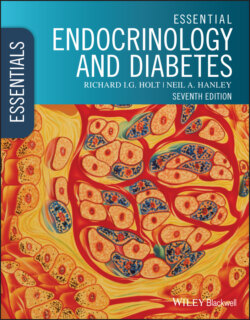Читать книгу Essential Endocrinology and Diabetes - Richard I. G. Holt - Страница 91
Analytical methods linked to mass spectrometry
ОглавлениеIn some situations, immunoassays are unreliable or unavailable, commonly because antibodies lack sufficient specificity, or there are difficulties with measurements at low concentrations (e.g. serum testosterone in women). This leads to differences in measurements across different assay platforms that inhibit the development of internationally agreed standards for diagnosis and care. For some steroid or peptide hormones, or metabolic intermediaries, mass spectrometry (MS) is becoming increasing helpful. It is applied either by itself or, for increased ability to resolve and measure substances, in tandem (MS/MS) or downstream of liquid chromatography (LC/MS) or gas chromatography (GC/MS). These approaches provide definitive identification of the relevant hormone or compound according to its chemical and physical characteristics, e.g. particularly useful for the unequivocal detection of performance‐enhancing agents in sport.
Figure 4.3 The basics of an immunoassay for thyroxine (T4; also see text). As in Figure 4.1, in practice, large numbers of molecules are present for each reagent. Under the conditions shown, the competition between equal amounts of labelled and unlabelled T4 in Tube 2 will be such that, on average, 50% of the antibody binding sites will be occupied by labelled T4. Because of competition between labelled and unlabelled hormone for a limited amount of antibody, this type of immunoassay is sometimes called a ‘competitive‐binding’ assay. After removing unbound label (as in Figure 4.2 legend), the fluorescent or radioactive bound fraction is quantified and a calibration curve constructed. In practice, five to eight calibration points are used to construct the curve.
GC allows separation of vaporized molecules according to their chemical structure. For a sample loaded on a GC column, different components exit the column and pass to the mass spectrometer at different times. MS ionizes compounds to charge them, after which the spectrometer measures mass and charge during passage through an electromagnetic field. This gives a characteristic mass‐to‐charge ratio for any one substance. As with immunoassays, patient samples can be judged against the performance of precisely known standards. LC/MS is similar to GC/MS; however, the initial separation is performed in the liquid rather than the gaseous phase.
